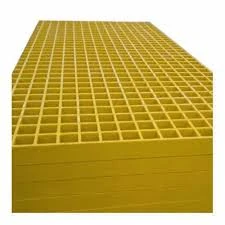loading...
- No. 9, Xingyuan South Street, Dongwaihuan Road, Zaoqiang County, Hengshui, Hebei, China
- admin@zjcomposites.com
- +86 15097380338
- Welcome to visit our website!
Exploring the Benefits of Membrane Housing for Efficient Filtration Systems
Membrane Housing An Essential Component in Water Treatment Technologies
In today’s world, the demand for clean and safe water has never been greater. As industrial growth and population increase exert pressure on freshwater resources, innovative technologies are being employed to ensure the sustainable management of water. One such technology that has gained prominence is membrane filtration, and at the heart of this technology lies the concept of membrane housing. This article will explore the importance of membrane housing in water treatment systems, its design considerations, and its impact on efficiency and sustainability.
Membrane filtration utilizes semi-permeable membranes to separate impurities from water. These membranes allow water to pass through while blocking larger particles, bacteria, and contaminants. The effectiveness of this process is significantly influenced by the design and quality of the membrane housing, which serves as the structural framework that holds the membranes in place and facilitates the flow of water through the filtration system.
Key Functions of Membrane Housing
The primary function of membrane housing is to provide a secure and stable environment for the membranes. It must be robust enough to withstand operational pressures while ensuring a tight seal to prevent leaks. These housings are typically constructed from materials such as stainless steel, PVC, or fibreglass, chosen for their durability, resistance to corrosion, and compatibility with the various chemicals that may be present in the treated water.
Another critical role of membrane housing is to optimize the flow of water through the membranes. Effective design is crucial to minimize pressure drops and maximize the volume of water that can be processed. This is particularly important in large-scale applications, such as municipal water treatment facilities or industrial wastewater management systems, where operational efficiency directly correlates to cost-effectiveness.
Design Considerations
membrane housing

When designing membrane housing, several considerations must be taken into account to achieve optimal performance. First and foremost is the selection of the appropriate housing size and configuration based on the specific application. This involves evaluating the type and size of the membranes being used, the required filtration flow rate, and the specific contaminants being targeted.
Furthermore, the design should facilitate ease of maintenance. Membrane filtration systems should allow for straightforward cleaning and replacement of membranes without extensive downtime. Features such as removable end caps and accessible union fittings can significantly enhance the maintenance process.
Another vital aspect of membrane housing design is the provision for pressure monitoring and control. Pressure differentials across the membranes can indicate fouling or blockage, and incorporating sensors can help operators take preemptive measures to maintain optimal performance.
Impact on Sustainability and Efficiency
Membrane housing not only plays a crucial role in the mechanical aspects of water treatment but also contributes to broader sustainability goals. As water scarcity becomes a pressing global issue, efficient water treatment technologies are pivotal. Membrane filtration offers advantages such as reduced chemical usage, lower energy consumption, and the potential for water reuse. By improving the efficiency of membrane housing, these systems can operate more effectively, reducing waste and maximizing resource utilization.
Additionally, advanced membrane technologies are being developed that allow for the treatment of more complex wastewater streams, including those from industrial processes. These innovations are vital in closing the loop in water use and promoting a circular economy.
In conclusion, membrane housing is a critical component of modern water treatment systems. Its design and functionality directly impact the efficiency, effectiveness, and sustainability of membrane filtration technologies. As the global demand for clean water continues to rise, investing in high-quality membrane housing and innovative designs will be paramount in overcoming water scarcity challenges and ensuring a healthier environment for future generations. With continuous advancements in materials and engineering, the future of membrane housing looks promising, paving the way for enhanced water treatment solutions that are both economically viable and environmentally sustainable.
-
The Rise of FRP Profiles: Strong, Lightweight, and Built to LastNewsJul.14,2025
-
SMC Panel Tanks: A Modern Water Storage Solution for All EnvironmentsNewsJul.14,2025
-
GRP Grating: A Modern Solution for Safe and Durable Access SystemsNewsJul.14,2025
-
Galvanized Steel Water Tanks: Durable, Reliable, and Ready for UseNewsJul.14,2025
-
FRP Mini Mesh Grating: The Safer, Smarter Flooring SolutionNewsJul.14,2025
-
Exploring FRP Vessels: Durable Solutions for Modern Fluid HandlingNewsJul.14,2025
-
GRP Structures: The Future of Lightweight, High-Performance EngineeringNewsJun.20,2025
